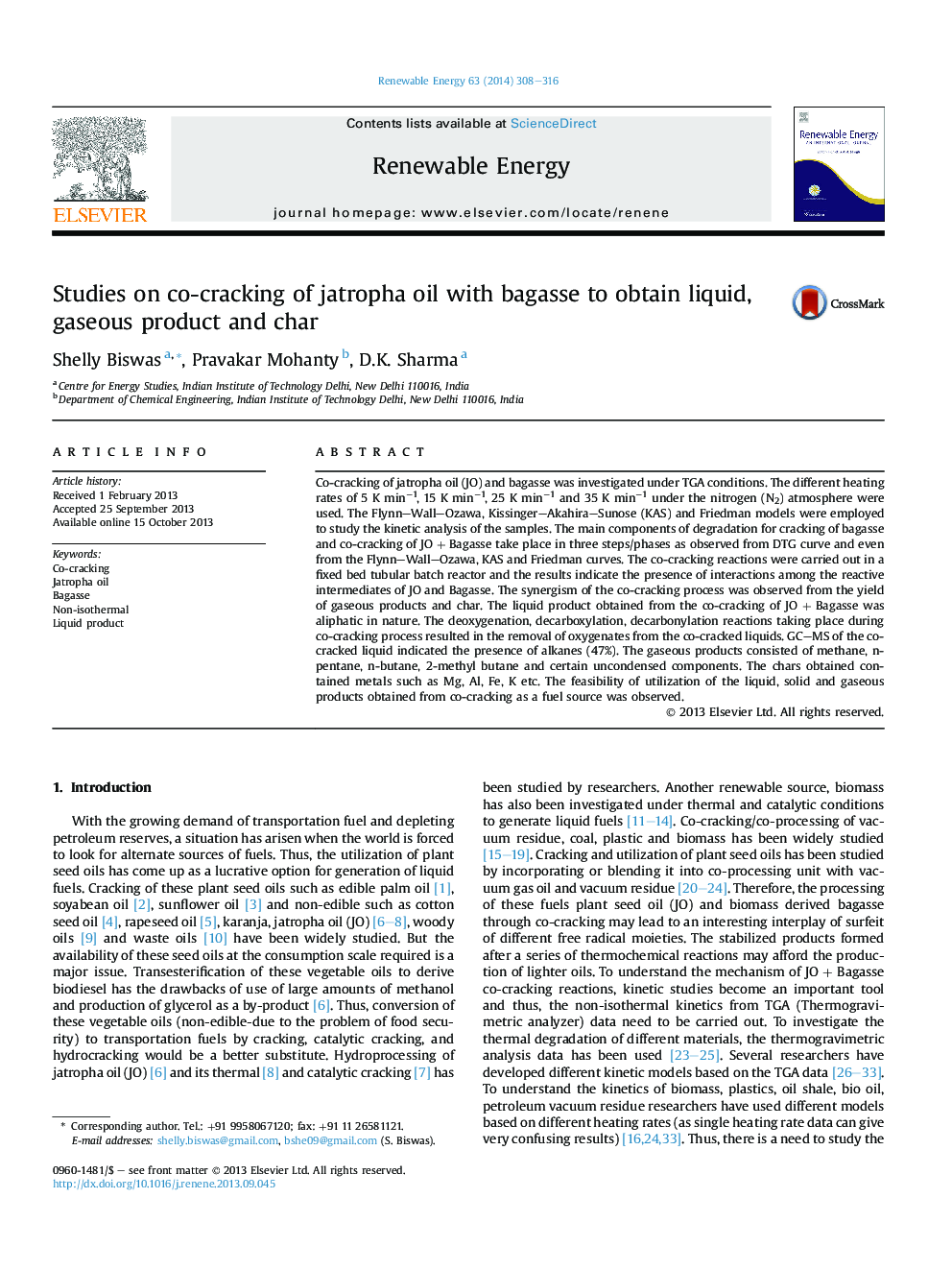| Article ID | Journal | Published Year | Pages | File Type |
|---|---|---|---|---|
| 6768806 | Renewable Energy | 2014 | 9 Pages |
Abstract
Co-cracking of jatropha oil (JO) and bagasse was investigated under TGA conditions. The different heating rates of 5Â KÂ minâ1, 15Â KÂ minâ1, 25Â KÂ minâ1 and 35Â KÂ minâ1 under the nitrogen (N2) atmosphere were used. The Flynn-Wall-Ozawa, Kissinger-Akahira-Sunose (KAS) and Friedman models were employed to study the kinetic analysis of the samples. The main components of degradation for cracking of bagasse and co-cracking of JOÂ +Â Bagasse take place in three steps/phases as observed from DTG curve and even from the Flynn-Wall-Ozawa, KAS and Friedman curves. The co-cracking reactions were carried out in a fixed bed tubular batch reactor and the results indicate the presence of interactions among the reactive intermediates of JO and Bagasse. The synergism of the co-cracking process was observed from the yield of gaseous products and char. The liquid product obtained from the co-cracking of JOÂ +Â Bagasse was aliphatic in nature. The deoxygenation, decarboxylation, decarbonylation reactions taking place during co-cracking process resulted in the removal of oxygenates from the co-cracked liquids. GC-MS of the co-cracked liquid indicated the presence of alkanes (47%). The gaseous products consisted of methane, n-pentane, n-butane, 2-methyl butane and certain uncondensed components. The chars obtained contained metals such as Mg, Al, Fe, K etc. The feasibility of utilization of the liquid, solid and gaseous products obtained from co-cracking as a fuel source was observed.
Related Topics
Physical Sciences and Engineering
Energy
Renewable Energy, Sustainability and the Environment
Authors
Shelly Biswas, Pravakar Mohanty, D.K. Sharma,
